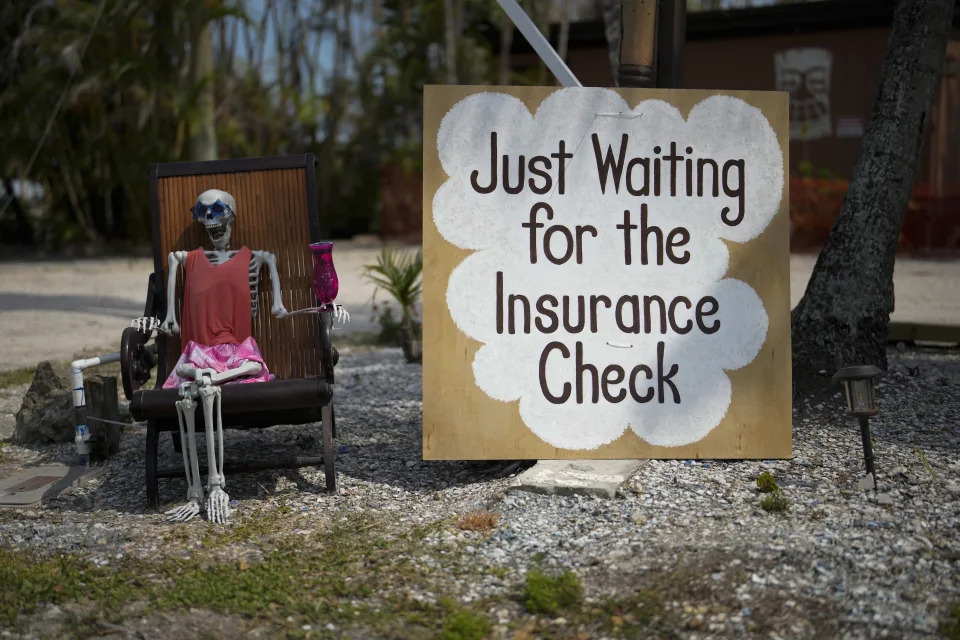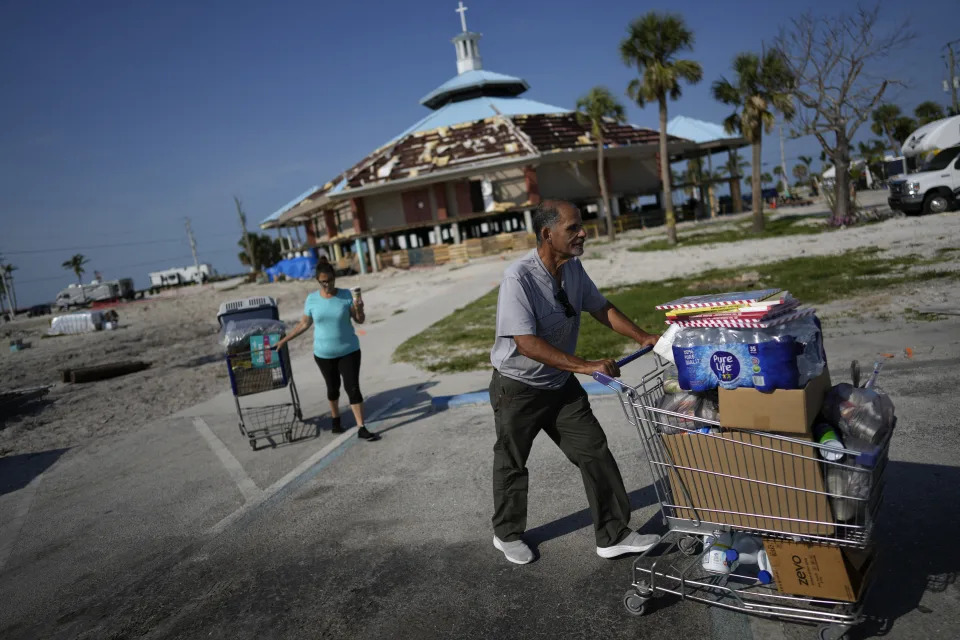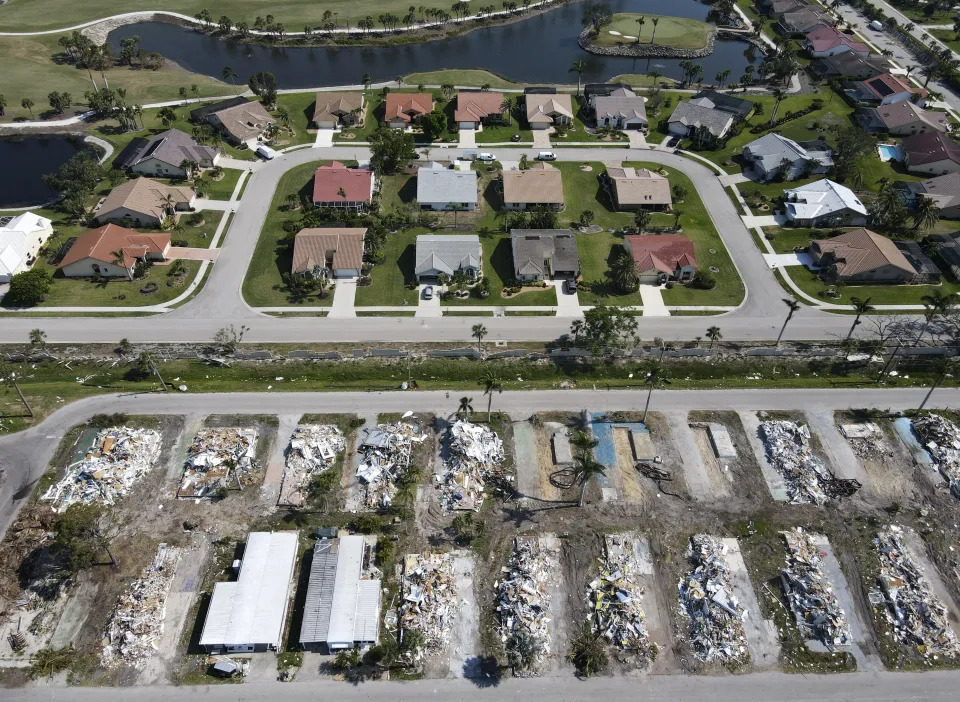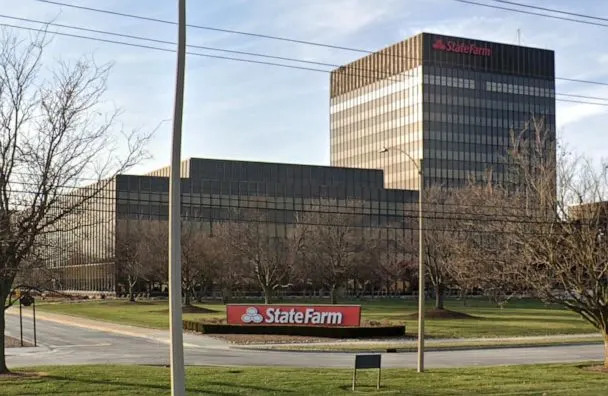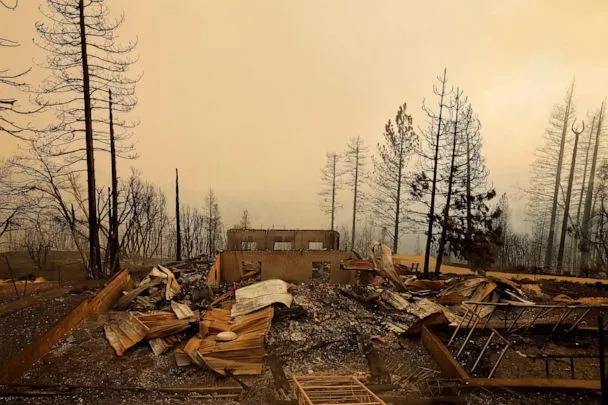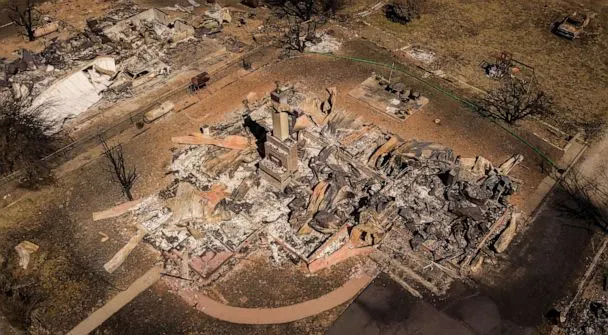The New York Times
A Small Town’s Tragedy, Distorted by Trump’s Megaphone
Charles Homans and Ken Bensinger – May 29, 2023

McHENRY, N.D. — There were no known witnesses when Shannon Brandt and Cayler Ellingson got into an argument in the blurry hours after last call at Buck’s n Doe’s Bar & Grill in September. And no one but Brandt could say with certainty what led him to run over Ellingson with his Ford Explorer, crushing him to death in a gravel alley.
But the people of McHenry, a town of 64 in sparsely populated Foster County, North Dakota, have gotten used to hearing from people who think they know.
They include former President Donald Trump, who denounced the killing of Ellingson, an 18-year-old recent high school graduate, at the hands of a “deranged Democrat maniac who was angry that Cayler was a Republican” in a Truth Social post. Rep. Marjorie Taylor Greene of Georgia described Brandt on Twitter as a “Democrat political terrorist” and cited the case as evidence that “Democrats want Republicans dead, and they’ve already started the killings.”
Trump and Greene were among a chorus of Republican politicians — including several members of Congress and the attorney general of North Dakota — who rushed to condemn Brandt. They relied on a handful of early news stories that cited a state highway patrol officer’s report, which suggested Brandt killed Ellingson because he believed he was a “Republican extremist.”
That claim, made weeks before the midterm elections, ignited a brief national political firestorm. Republican politicians and right-wing media figures claimed that Brandt had been inspired by President Joe Biden’s recent warnings about “extremism” in the Republican Party. They complained that news media coverage of political violence willfully ignored instances when the assailants were Democrats.
But the episode quickly became an example of another media phenomenon: the distortion of complex, painful events to fit an opportune political narrative.
Although evidence in the case suggests the two men argued about politics that night, law enforcement officials concluded quickly that the killing was not politically motivated. The prosecutor for Foster County who brought the charges never accused Brandt of running over Ellingson because of political beliefs.
Acquaintances and a family member could not recall Brandt, a 42-year-old welder with no history of party registration, expressing political views.
Late last month, the murder charge against Brandt was downgraded to manslaughter, which carries a sentence of up to 10 years in prison. He agreed on May 18 to plead guilty.
By averting a courtroom trial, the plea leaves many questions hanging over a still largely unexplained incident — and over a town that found itself swept abruptly into a national political cyclone and just as abruptly cast out.
In conversations this month, residents of McHenry — a conservative, close-knit agricultural community where most families, including the Ellingsons and the Brandts, have known each other for decades, if not generations — said the narrative of the tragedy that Trump and others promoted never made much sense to them. But except for a handful of county officials, they have shied away from speaking on the record about it.
Robyn Sorum, the mayor of McHenry, said she had advised the community against doing so to avoid worsening local tensions around the case. “Anywhere something like this happens, it’s a tragedy, you know?” she said. “But then you get to a small town where everyone knows each other, it makes it even rougher.”
Ellingson’s family did not comment. Brandt, through his attorney, Mark Friese, declined an interview.
Friese, who did not discuss details of the incident, described the aftermath as a cautionary tale. “I think we’re going to see more of this,” he said. “Things end up being tried on social media instead of in the courtroom.”
A Confusing Encounter
The town of McHenry sits on a crosshatch of gravel roads etched into an undulating plain of wheat and soybean farms and Angus cattle ranches. The nearest landmarks of any significance, a 30- and 60-minute drive away, respectively, are a decommissioned intercontinental ballistic missile silo and the world’s largest concrete buffalo.
“It’s a nice little town,” said Sorum, who is also the proprietor of the Hunting Shack cafe, the only business besides Buck’s n Doe’s on the town’s main thoroughfare. “Everybody tries to help everybody else.”
On the night of Sept. 17, 100 or so people from McHenry and surrounding towns gathered outside of Buck’s n Doe’s for McHenry Days, a local festival. After midnight, when a three-piece country band from Fargo packed up and went home, some of the festival goers drifted into the bar.
The crowd included Ellingson, who had come to the festival with his family and stayed behind with his brother after their parents drove back to nearby Grace City. And it included Brandt, who came from a locally prominent family that had lived in McHenry since the early 20th century. His father and uncle had shot the immense trophy elks that looked down upon patrons from the walls of the bar.
Buck’s n Doe’s closed at 2 a.m. Fifty-five minutes later, the county 911 dispatcher received a call from Brandt. “I hit a man with my vehicle,” he said in the recording of the call.
At the time, Ellingson was alive and conscious but badly injured. He died later that morning at a hospital.
The next day, two Fargo television stations reported that a sworn declaration from a highway patrol officer said that Brandt had claimed Ellingson “was part of a Republican extremist group” and admitted to hitting the teen with his car “because he had a political argument” with him. The highway patrolman’s statement was based on a recording of the 911 call and an interview of Brandt by two other law enforcement officers.
But the declaration appears to have mischaracterized the 911 call. And the prosecutor never presented evidence that showed Brandt told officers that he ran into the teen because of the argument or that he believed he was part of an extremist group. Five days after the incident, a captain in the North Dakota State Highway Patrol told reporters that his agency had concluded the killing was “not political in nature at all.”
Subsequent court filings and testimony instead revealed a murkier, more confused encounter.
In phone calls, Brandt and Ellingson both made a reference to some sort of political dispute. Both called family members during the encounter, and each described feeling threatened, according to court records.
Ellingson told his mother “some politics had got brought up” and Brandt “didn’t like what he had to say,” according to a state Bureau of Criminal Investigation agent who interviewed Ellingson’s mother. She recalled her son saying “something to the effect of, ‘They’re on to me. I should round up my cousins or my posse,’” the agent testified.
In his 911 call after he hit Ellingson, Brandt said the teenager had said “something about some Republican extremist group,” but he did not claim Ellingson was a member. Brandt told the dispatcher he believed the teen was “calling other guys to come get me.” There’s no evidence Ellingson did so.
In the 911 call, Brandt described trying to leave in a panic only to be blocked by Ellingson. At one point he said he knew his running over Ellingson had been “more than” an accident. But he otherwise insisted the act had been unintentional. “I never meant to hurt him,” he told the dispatcher.
Both men were intoxicated. Brandt’s family and Friese say Brandt has been diagnosed with autism spectrum disorder, which Friese argued was a relevant factor in the case. An autopsy by the state forensic medical examiner ruled the cause of death as “accidental.”
‘Politically Motivated’
In the days after the episode, several local news outlets published articles. As is typical with early reports, those first stories relied heavily on the sparse details provided by law enforcement records.
“Man admits to killing teen after political dispute in Foster Co., court docs allege,” was the headline published online by Valley News Live, a news outlet based in Fargo, the day after Ellingson’s death.
The next morning, Gateway Pundit, a right-wing site that regularly seeds stories in the conservative media, wrote its own version under the headline “Crazed North Dakota man runs over and kills teen for ‘extremist’ Republican views.”
That evening, the case hit Fox News’s prime-time lineup, where it stayed for days. “This is a guy who intended to kill an 18-year-old Republican because he was a Republican,” Jeanine Pirro said during an on-air debate about the incident, claiming that Brandt chased Ellingson in his vehicle.
Pirro blamed Biden, who she said “is the one who started this extremist hate” when he made a speech about the perils of far-right extremism earlier that month. On Twitter, Greene posted a clip of Biden referencing “extreme MAGA Republicans,” adding that Ellingson was “executed in cold blood by a Democrat political terrorist because of rhetoric like this.”
The case spread across the right-wing ecosystem, from Jack Posobiec, the far-right conspiracy theorist and podcaster, to Rep. Jim Jordan of Ohio, who appeared on Laura Ingraham’s Fox News show, calling Brandt a “terrible guy.” State Attorney General Drew H. Wrigley condemned the episode as “hateful violence.”
In McHenry and the neighboring town of Glenfield, where Brandt lives, acquaintances said they were surprised by the claims of a political motive. There is no evidence in public records or court filings suggesting Brandt is a Democrat.
“I can honestly tell you, I don’t know who Shannon voted for in the last presidential election,” Ashley Brandt-Duda, Brandt’s sister, said in an interview. Although their parents are both registered Republicans, “I would say my family is quite apolitical,” she said.
Brandt’s reference to extremists was similarly met with surprise in McHenry, where both residents and law enforcement officials profess to know little about such groups. The county sheriff’s records do mention one previously unreported incident: In October, a long-shuttered local school was found to have been vandalized, its interior walls spray-painted with the stenciled logo of Patriot Front, a white nationalist group.
The building’s owner, David Ludwig, initially told a sheriff’s deputy that the break-in happened the weekend of Ellingson’s killing. But when reached by The New York Times, he said that timing was just a guess. Justin Johnson, the Foster County sheriff, said he considered the incident to be “totally unrelated.”
Nothing on public record suggests that Ellingson or Brandt had links to extremist groups.
‘Everything Just Exploded’
In the week and a half after Ellingson’s death, the case was discussed on at least seven Fox News shows. The coverage continued well after law enforcement officials had said the killing was not politically motivated, a point that was only occasionally mentioned on-air.
Brandt-Duda said her parents left their home in McHenry out of concern for their safety. When they returned about a week later, they found more than 50 threatening messages on their answering machine.
They received numerous threatening letters, too, Brandt-Duda said. One was written on the margins of an article about the incident from The New York Post, she said. The newspaper covered the case extensively and also published an opinion column arguing that the “president of the United States, supported by a fan-girl media, spouts irresponsible rhetoric that led to Ellingson’s death.”
“Everything just exploded,” Brandt-Duda said.
The county court and sheriff’s offices also received numerous threats, according to multiple local officials. On Sept. 29, 11 days after Ellingson’s death, the county prosecutor, Kara Brinster, dropped the initial charge of vehicular homicide, which is used for fatal drunken driving accidents, for a new one: intentional homicide, which carries a sentence of up to life in prison.
Brinster did not respond to requests for comment on the decision.
Then, as quickly as it swelled, the media frenzy receded. Fox Digital, the TV network’s online arm, continued to publish articles that acknowledged the more complicated story that was emerging from officials. But Fox News’ hosts did not mention the case on-air again after Sept. 30.
Asked for comment, a Fox spokesperson, Jessica Ketner, noted the company’s online articles but did not comment on the network’s television coverage.
Gateway Pundit, too, stopped publishing stories on the case. Politicians who had been quick to speak out appeared to lose interest. Trump, Greene, Jordan and Wrigley did not respond to requests for comment.
This month, after Brinster dismissed the intentional homicide charge, the decision merited little more attention than a front-page story in The Foster County Independent and an article by The Associated Press.
But just as Brandt agreed to plead guilty, Posobiec, the right-wing podcaster, took up the story again. In a segment on his daily show, he singled out the prosecutor, claiming she had gone soft on Brandt. He posted her photograph and phone number online, and told listeners to call her to complain.
“Maybe Kara Brinster should be prosecuted,” he said. “Maybe we should look into her.”



